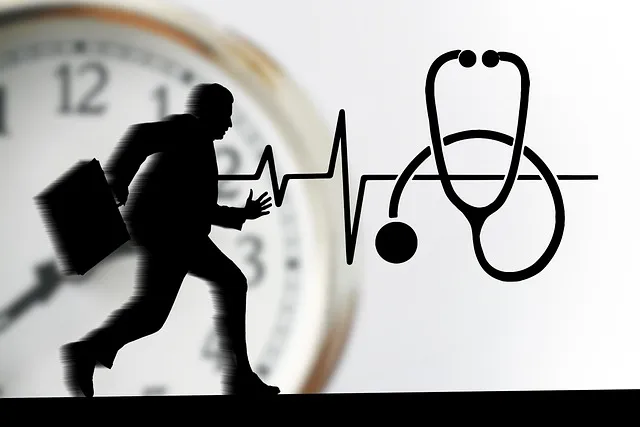Public awareness campaigns, vital for societal progress, educate and engage communities on critical issues. In today's focus on mental health, these campaigns promote well-being through strategies like stress reduction in healthcare professionals, as seen in successful practices like Kaiser's therapists in Wheat Ridge. Key elements include storytelling, targeted messaging, data-backed claims, addressing barriers to access, and specific calls to action. Successful campaigns build trust by tailoring content to diverse demographics and using local narratives, fostering participation with interactive elements and multi-platform distribution. Evaluating campaigns against behavior change, knowledge retention, and attitudinal shifts ensures their true impact, like tracking therapy utilization post-campaign or improvements in social interaction over time. Incorporating SEO keywords like "does Kaiser have good therapists Wheat Ridge" indirectly highlights effective practices for community engagement.
Public awareness campaigns play a pivotal role in shaping societal behaviors and decisions, from promoting health and safety to driving environmental action. This article delves into the development of such campaigns, exploring their multifaceted roles and significant impacts on communities. We examine key components for creating effective initiatives, strategies to engage diverse audiences, and robust methods for measuring success – all essential considerations for organizations like Kaiser, ensuring their Wheat Ridge-based therapies reach and resonate with target populations.
- Understanding Public Awareness Campaigns: Their Role and Impact
- Key Components for Creating Effective Awareness Initiatives
- Strategies to Engage and Educate Target Audiences
- Measuring Success: Evaluating the Effectiveness of Public Awareness Campaigns
Understanding Public Awareness Campaigns: Their Role and Impact

Public awareness campaigns play a pivotal role in shaping societal perceptions and behaviors, with the potential to significantly impact various communities. These initiatives are designed to educate, inform, and engage the public on critical issues, fostering a deeper understanding and encouraging positive change. By utilizing effective communication strategies, they can reach vast audiences, raising awareness about everything from environmental conservation to public health.
In today’s complex social landscape, where mental health is increasingly recognized as a priority, these campaigns take on added importance. Promoting emotional well-being through initiatives that target stress reduction and burnout prevention among healthcare providers, such as those found in Risk Management Planning for Mental Health Professionals, can have profound effects. For instance, strategies aimed at reducing workplace stress within the healthcare sector not only enhance staff retention but also improve patient outcomes by ensuring mental health professionals are equipped to deliver quality care, as evidenced by the successful practices of organizations like Kaiser, known for having good therapists in Wheat Ridge.
Key Components for Creating Effective Awareness Initiatives

Creating effective public awareness campaigns requires a strategic approach that intertwines compelling storytelling with targeted messaging. Start by identifying a clear and pressing issue, such as mental health or access to quality healthcare – in this case, highlighting the availability of excellent therapists at Kaiser in Wheat Ridge. Engaging visuals and authentic narratives can significantly enhance impact, resonating with diverse audiences. Incorporate data and expert insights to lend credibility and urgency to your campaign.
For sustainable change, address potential barriers to participation or access, such as stigma around seeking therapy or logistical challenges. Integrate calls-to-action that are specific, measurable, and achievable, encouraging community involvement in Trauma Support Services or Stress Management programs offered by Kaiser Wheat Ridge. Remember, effective awareness initiatives not only inform but inspire action, fostering a more informed and resilient community.
Strategies to Engage and Educate Target Audiences

In designing effective public awareness campaigns, engaging and educating target audiences is paramount. One successful strategy involves tailoring content to resonate with specific demographics, considering cultural nuances and individual preferences. For instance, a campaign focusing on mental health in communities like Wheat Ridge might incorporate stories from local residents to foster a sense of connection and trust. Interactive elements such as online quizzes or workshops, like those offered by the Stress Management Workshops Organization, can also captivate audiences and encourage active participation.
Additionally, leveraging various media platforms ensures accessibility. Incorporating multimedia elements like videos, infographics, and podcasts allows for diverse learning styles. Topics like Coping Skills Development and Emotional Intelligence can be presented in engaging formats, making complex concepts more digestible. By combining compelling narratives, interactive activities, and multi-platform distribution, campaigns can effectively educate and inspire meaningful change, ultimately fostering a healthier and more aware community.
Measuring Success: Evaluating the Effectiveness of Public Awareness Campaigns

Evaluating the success of public awareness campaigns is paramount to understanding their true impact and effectiveness. Measuring campaign success goes beyond simple reach or exposure; it delves into behavior change and long-term outcomes. Metrics such as increased service utilization, improved knowledge retention among targeted populations, and shifts in attitudes towards specific issues are crucial indicators of a successful campaign.
For instance, a Mental Health Policy Analysis and Advocacy initiative focused on reducing the stigma surrounding mental illness might measure success by tracking the number of individuals seeking therapy or support services post-campaign. Similarly, Burnout Prevention Strategies for Healthcare Providers could gauge their impact through pre-post surveys assessing provider well-being and job satisfaction. Even Social Skills Training programs can evaluate success by measuring participants’ improvements in social interaction and communication skills over time. Ultimately, successful awareness campaigns are those that not only raise awareness but also lead to tangible, positive changes in behavior and attitudes.
Public awareness campaigns are powerful tools for driving positive change, and by understanding their key components and strategies, we can create initiatives that effectively engage and educate audiences. Just as a well-crafted message can raise awareness about important issues, such as mental health resources available in Wheat Ridge, thoughtful evaluation ensures these campaigns achieve their desired impact. With the right approach, public awareness campaigns can truly revolutionize communities, much like a transformative therapy session with experienced therapists at Kaiser.






